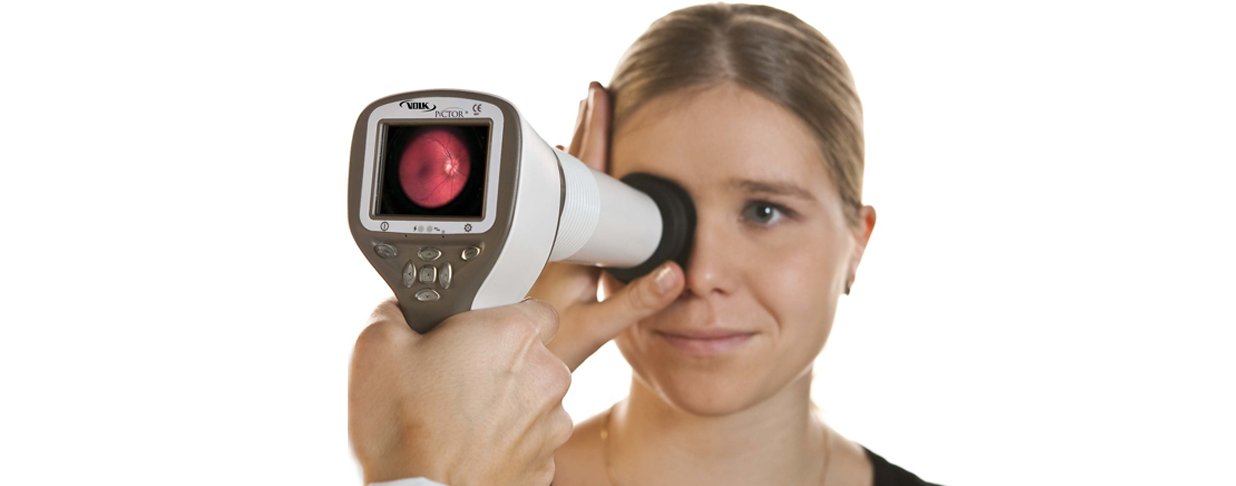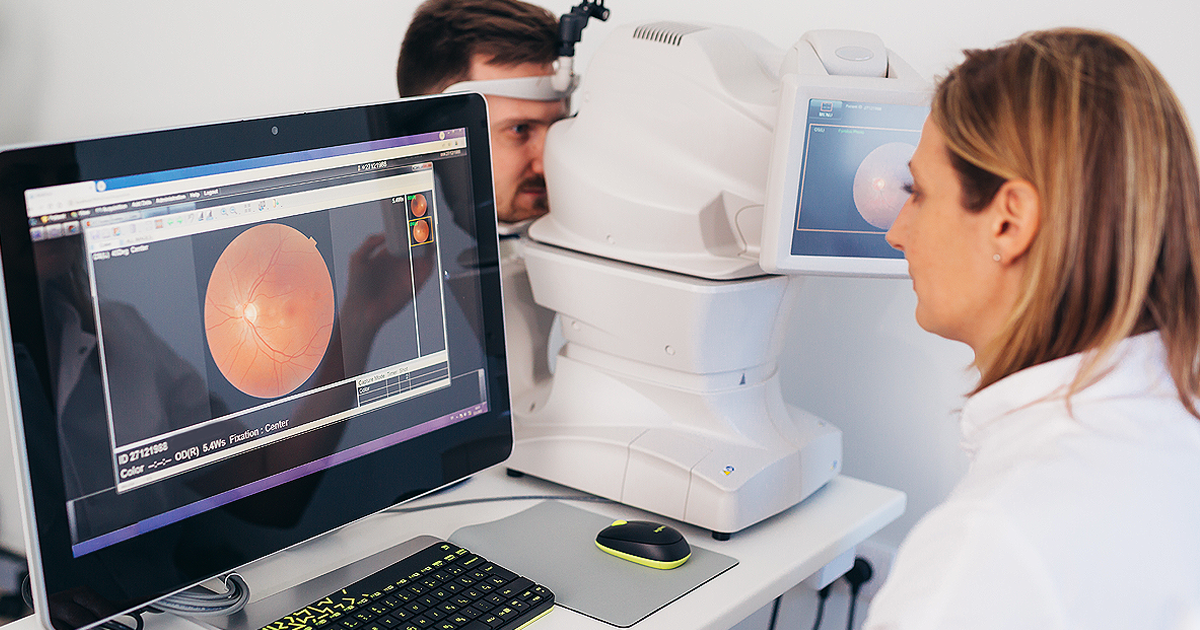Because of its anticipated growth and effect on workforces, awareness of diabetic retinopathy is important for employers and benefits brokers.
Diabetic retinopathy is the most common diabetes-related eye disease and the leading cause of blindness in working-age Americans. By 2050, the Centers for Disease Control and Prevention (CDC) expects the number of Americans living with the complication of the disease to reach 14.6 million, up from 7.7 million in 2010. Employees who have diabetes type 1 or diabetes type 2, or women who had gestational diabetes during pregnancy, are also at risk of diabetic retinopathy.1
Comprehensive eye exams help detect diabetes signs
Like many other chronic and vision-related diseases, early detection is a key to treating diabetic retinopathy and controlling or avoiding severe complications.
So what is the first sign of diabetic retinopathy? According to the CDC, symptoms that could indicate that the disease has progressed to a more advanced stage include: 1
- Blurry vision
- Spots that “float” in your vision
- Halos around lights
- Loss of central vision
- Loss of color vision
But since the disease may not have any symptoms in the early stages, a comprehensive eye exam offers a simple and effective way to detect signs of the condition before it threatens employees’ vision. Early detection and treatment can reduce the risk of vision loss for diabetics by 95%. 2
Each year, health problems like diabetic retinopathy cost employers $1,685 per employee.3
A comprehensive eye exam benefit through the employer can prompt employees to seek regular eye care including a dilated view of the retina that can identify diabetic retinopathy. It’s easy to see how eye care can make a difference in health and healthcare spending.
How much can employers save? Those offering vision benefits to employees saved $5.8 billion over 4 years due to lower healthcare costs, higher productivity and less turnover.4 One study even found the average employer gains $7 for every $1 invested in vision benefits.5
Plus, special programs like EyeMed’s Diabetic Eye Care benefit enhancement can help bring down the cost of healthcare by encouraging high-risk employees to take advantage of timely eye services and diagnostic testing that can detect warning signs of advancing retinopathy (and other health conditions)—before they require more costly care.
The EyeMed Diabetic Eye Care benefit offers additional more frequent and in-depth eye care, including timely eye care reminders and additional diagnostic testing, allowing for early detection of diabetic ocular changes and treatment that can help prevent vision loss. (Comparable competitor benefits typically don’t provide the same benefits as often as EyeMed’s offering.) 6
Communicating vision benefits’ health impact to employees
Vision benefits can only be valuable if employees know why they matter to their health and their wallet, and how to use them. That’s why proactive communication is so important.
Vision carriers should make it easy for employers to communicate with employees across various touchpoints—including online, on-site at benefit fairs and in the mail—throughout the year to reinforce the advantages of using their vision benefits. Just one of the many communication touchpoints EyeMed offers is the eye exam reminder we mail to members who are at-risk for several health conditions, including diabetes.
These at-risk reminders are successful in encouraging patients to get their annual eye exam, which can also help health plans to improve their diabetic retinal exam component of the Centers for Medicare and Medicaid HEDIS score.
If you want to do something immediately, consider sharing this Eye Site on Wellness article, Diabetes and Your Eyes, with your employees.
To learn more about our Diabetic Eye Care Benefit, contact your EyeMed rep or use this contact form and we'll be in touch.
If you enjoyed reading this blog, you may also want to read:
- Diabetes management that includes vision care can be a game changer: My personal story on why vision care matters as a diabetic
- Integrating eye care in diabetes management: you can’t afford NOT to
BL-1911-CB-923
1 - CDC. “Watch Out for Diabetic Retinopathy.”
2 - National Eye Institute. “Facts About Diabetic Disease.”
3 - CDC. “Workplace Health Promotion Fact Sheet 2015.”
4 - Gallup Analytics, 2017.
5 - Transitions Optical, conducted by Wakefield Research, 2018. “Employee Perceptions of Vision Benefits.” ; Vision Benefits Matter, carrousel 3.
6 - EyeMed Visionary: Pathway to prevention and cost-reduction: a Diabetic Eye Care benefit, June 2018.




